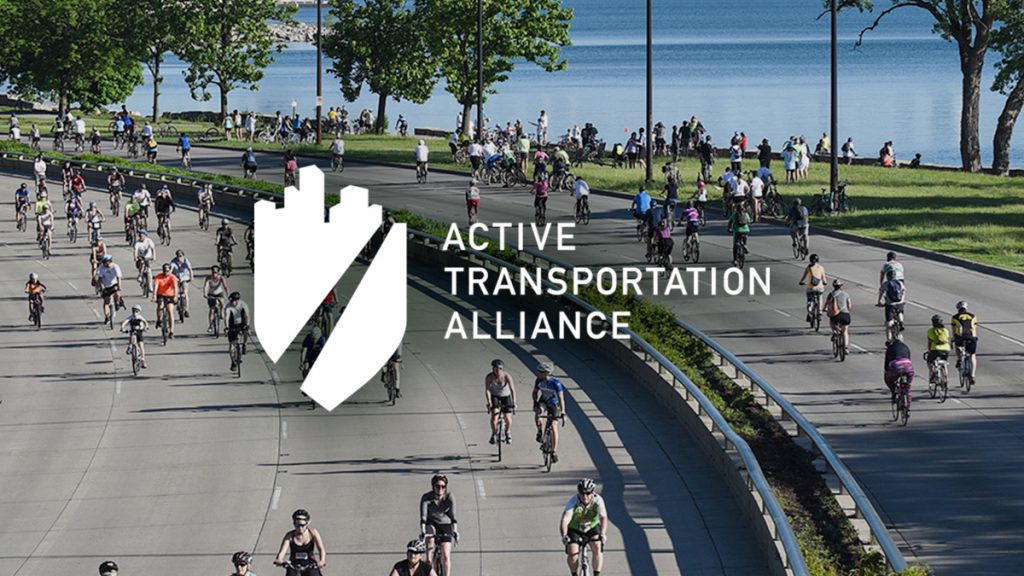NEWS RELEASE
Contact:
Lee Crandell
Active Transportation Alliance
312.427.3325 x395
[email protected]
Business Owners and Transportation Advocates Applaud City's Plan for a Safer and More Livable Milwaukee Avenue that Includes Protected Bike Lanes
CHICAGO, April 30, 2013 — The Chicago Department of Transportation (CDOT) has proposed plans for new barrier-protected bike lanes on Milwaukee Avenue between Kinzie and Elston, making the street safer and more livable. The plans were recently posted online and are being presented to the community at a public meeting tonight at 6:30 p.m. at Intuit, 756 N. Milwaukee. Business owners and transportation advocates praised the plan as a way to improve safety by creating more order on the street, while creating a street environment that is more welcoming and attractive to potential retail customers.
(CDOT's project plans and meeting announcement can be found online here: http://www.cityofchicago.org/city/en/depts/cdot/provdrs/bike/alerts/2013/apr/milwaukee_avenuespokeroute.html )
After the announcement of potential bikeway improvements on Milwaukee Avenue last year, more than 2,800 people signed a petition supporting protected bike lanes as part of the plans. During rush hour, more than 40 percent of Milwaukee Avenue traffic is comprised of bikes, according to recent CDOT traffic counts, making it the busiest biking street in Chicago.
"Protected bike lanes create a more organized traffic flow that is safer for everyone, whether you are walking, biking or driving a car," said Ron Burke, executive director of the Active Transportation Alliance. "Milwaukee Avenue has the highest bike traffic of any street in Chicago, so it's especially important to improve safety on this route by better balancing the needs of everyone on the street."
"Milwaukee Avenue is currently chaotic and there's a lot of unsafe speeding," said Tim Coonan, owner of Big Shoulders Coffee, located at Milwaukee and Chicago. "Most of our customers arrive by foot, bike or transit, so safety improvements and protected bike lanes will really capitalize on one of our strengths and help attract more customers."
Protected bike lanes use physical barriers to separate people riding bikes and motorized traffic. By providing people on bikes with their own protected space, the design helps people of all ages feel more comfortable biking on city streets, while also making it more comfortable for people driving to share the street with people biking. Statistics show protected bike lanes encourage more people to bike while improving a street's overall safety for everyone — whether they walk, bike or drive. A study recently published in the American Journal of Public Health found that risk of injury is 89 percent lower biking on protected bike lanes compared to major streets with no bike infrastructure.
Demand for safer streets for biking has been growing in Chicago and around the country. A National Highway Traffic Safety Administration survey found that 71 percent of Americans would like to bicycle more, but fewer than half feel that their community is designed for making biking safe. This pent-up demand for safer bike infrastructure has been on full display in Chicago. Following installation of a protected bike lane on Kinzie Street last year, bicycle ridership on Kinzie increased 55 percent.
"The faster the money goes by our front door, the less likely it is to end up in our establishment," said Angelo Karras, owner of Windy City Café, located at Milwaukee and Chicago. "The planned safety improvements and protected bike lanes will help to calm traffic while making our block more welcoming for walking, biking and lingering."
New York City found that protected bike lanes had a significant positive impact on local business strength. After the construction of a protected bike lane on 9th Avenue, local businesses saw a 49 percent increase in retail sales. In comparison, local businesses throughout Manhattan only saw a 3 percent increase in retail sales.
"Protected bike lanes will make Milwaukee Avenue a more vibrant and livable place," said Doug O'Donahue of Upgrade Cycle Works. "By providing safe, comfortable and appealing places for people to bike, the new protected bike lanes will contribute to the area's growing energy and economic vitality."
The Active Transportation Alliance is a non-profit, member-based advocacy organization that works to make bicycling, walking and public transit so safe, convenient and fun that we will achieve a significant shift from environmentally harmful, sedentary travel to clean, active travel. The organization builds a movement around active transportation, encourages physical activity, increases safety and builds a world-class transportation network. The Active Transportation Alliance is North America's largest transportation advocacy organization, supported by more than 7,000 members, 1,000 volunteers and 35 full-time staff. For more information about the Active Transportation Alliance, visit www.activetrans.org or call 312.427.3325.
###

